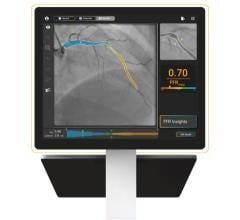
January 13, 2016 — Ionizing radiation can save lives, but it can also cause serious harm. Getting the right measurement of exposure to ionizing radiation in any situation is at the heart of an ISO standard that has recently been updated.
Safe exposure limits are a complex business because each organ in the body reacts differently. Skin, for example, needs to be protected from tissue reactions such as ulceration, while overexposure to the lens of the eye can cause cataracts. Add to that the complexity of the exposure, whether it can be localized to one area of the body or not, and other considerations like weak penetration of radiation in matter.
To effectively protect those who are, or could be, exposed to radiation, dose limits are recommended by the International Commission on Radiological Protection (ICRP). ISO 15382:2015, Radiological protection – Procedures for monitoring the dose to the lens of the eye, the skin and the extremities, measures the exposure to these organs. It has recently been revised, taking into account the new limit on equivalent dosing to the lens of the eye recommended by the ICRP.
Alain Rannou, chair of ISO/TC 85/SC 2, the technical committee that developed the standard, said the new version takes into account learnings from the latest studies and helps improve routine dosimetry measurements.
ISO 15382:2015 has been extended to the medical field and will help to improve routine monitoring of workers who are most likely to experience exposure to their extremities and the lens of the eye.
The standard provides procedures for monitoring the dose to the skin, the extremities and the lens of the eye. It gives guidance on how to decide if such dosemeters are needed and to ensure that individual monitoring is appropriate to the nature of the exposure, taking practical considerations into account. National regulations, if they exist, provide requirements that need to be followed.
ISO 15382:2015 specifies procedures for individual monitoring of radiation exposure of the skin, extremities (hands, fingers, wrists, forearms, feet and ankles) and lens of the eye in planned exposure situations. It covers practices which involve a risk of exposure to photons in the range of 8 keV to 10 MeV and electrons and positrons in the range of 60 keV to 10 MeV.
The standard gives guidance for the design of a monitoring program to ensure compliance with legal individual dose limits. It refers to the appropriate operational dose quantities, and it gives guidance on the type and frequency of individual monitoring and the type and positioning of the dosemeter. Finally, different approaches to assess and analyse skin, extremity and lens of the eye doses are given.
It is not in the scope of this International Standard to consider exposure due to alpha or neutron radiation fields.
For more information: www.iso.org


 October 24, 2025
October 24, 2025 









